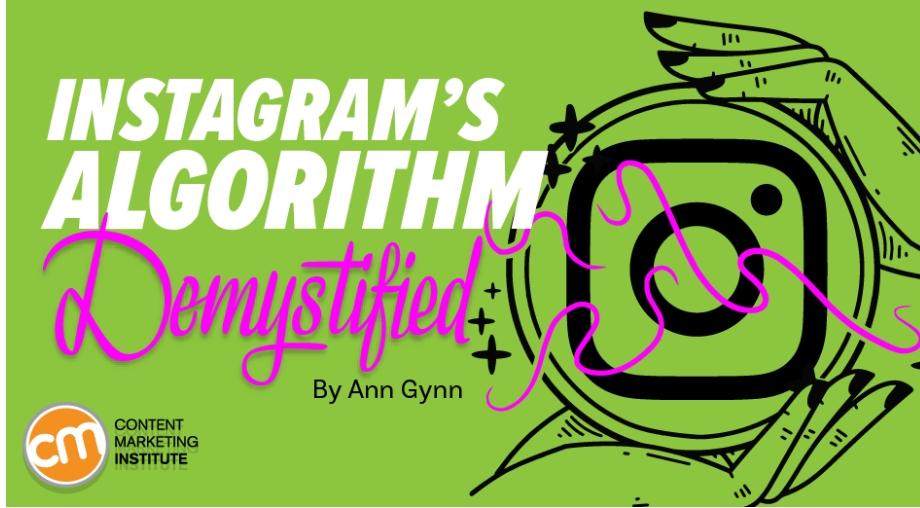Instagram’s Adam Mosseri is a social media content strategist’s best friend.
The Instagram leader frequently gets in front of the camera or behind the keyboard to remove some of the mystery behind the social media platform.
He recently penned a blog post to help people understand how the platform’s algorithms determine which content to deliver to which user. He writes that the goal is to create a great experience (and, savvy marketers know, to keep people staying on or coming back to Instagram).
Adam explains in detail the individual behaviors that influence what the algorithms serve for each feature – feeds, Stories, Explore, and Reels. You can use that information to tailor your content so it shows up more often where followers and new audience members will see it.
I’ll explain how and share examples of a few B2B brands creating smart Instagram content.
How Instagram chooses content to show in feeds and Stories
These elements influence which recommended content and ads (in order of importance) surface in a user’s feed (i.e., their home base):
- User’s activity – which posts they liked, shared, saved, or commented on
- Information about the post – popularity signals (such as likes, comments, shares, and saves), time, and location
- Interaction history – whether the user interacted with an account’s posts (e.g., whether they’ve commented on past posts).
Instagram uses that information to evaluate available content and predict the likelihood of the user spending a few seconds on the post, commenting on it, liking it, sharing it, and tapping on the profile photo.
The ranking factors for Stories, which typically disappear after 24 hours, are similar to those for feeds. Users only see Stories from accounts they follow.
Instagram algorithms consider all Stories from accounts the user follows (minus any that violate community guidelines). Then it selects what to show based on these input signals (in order of importance):
- Viewing history – frequency the user views the account’s Stories
- Engagement history – frequency the user sends a like, a DM, or otherwise engages with the account’s Stories
- Closeness – the user’s relationship with the account and how likely they are connected as friends or families.
With that information, Instagram predicts which Stories the user will find more valuable – how likely they are to tap or reply to a story or move on to the next one – to prioritize which Stories appear higher in the tray.
Content takeaway: It doesn’t matter how big your follower count is if your followers don’t do anything with your content. In planning your posts and Stories, think about what would get a reaction from your audience. Incorporate calls to action that relate to engagement…Read More

